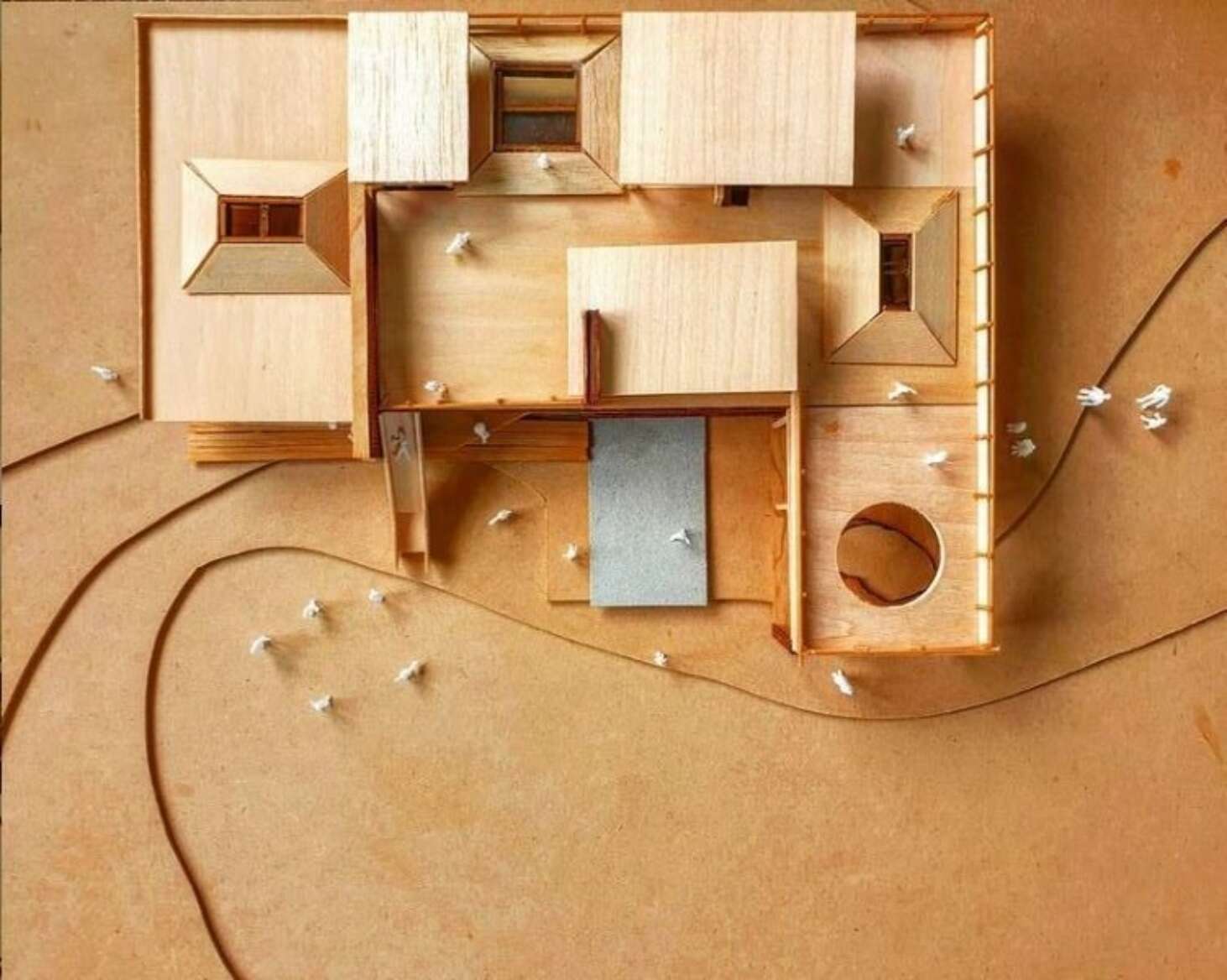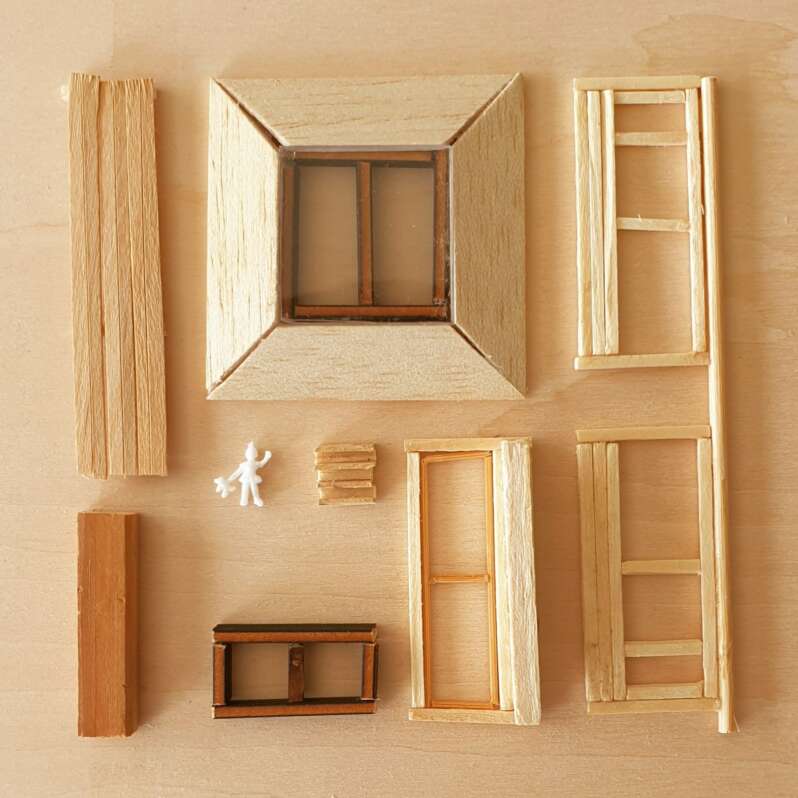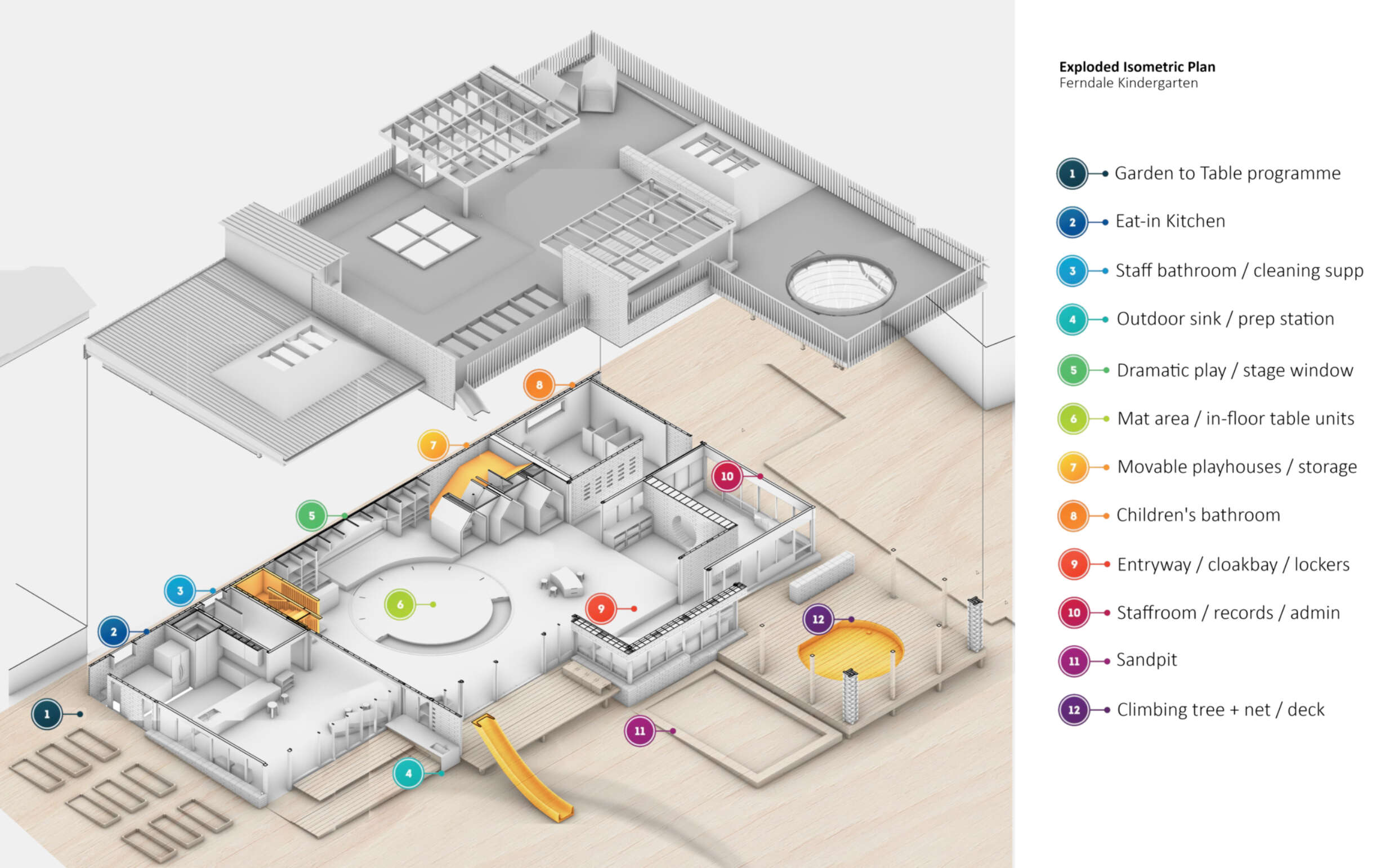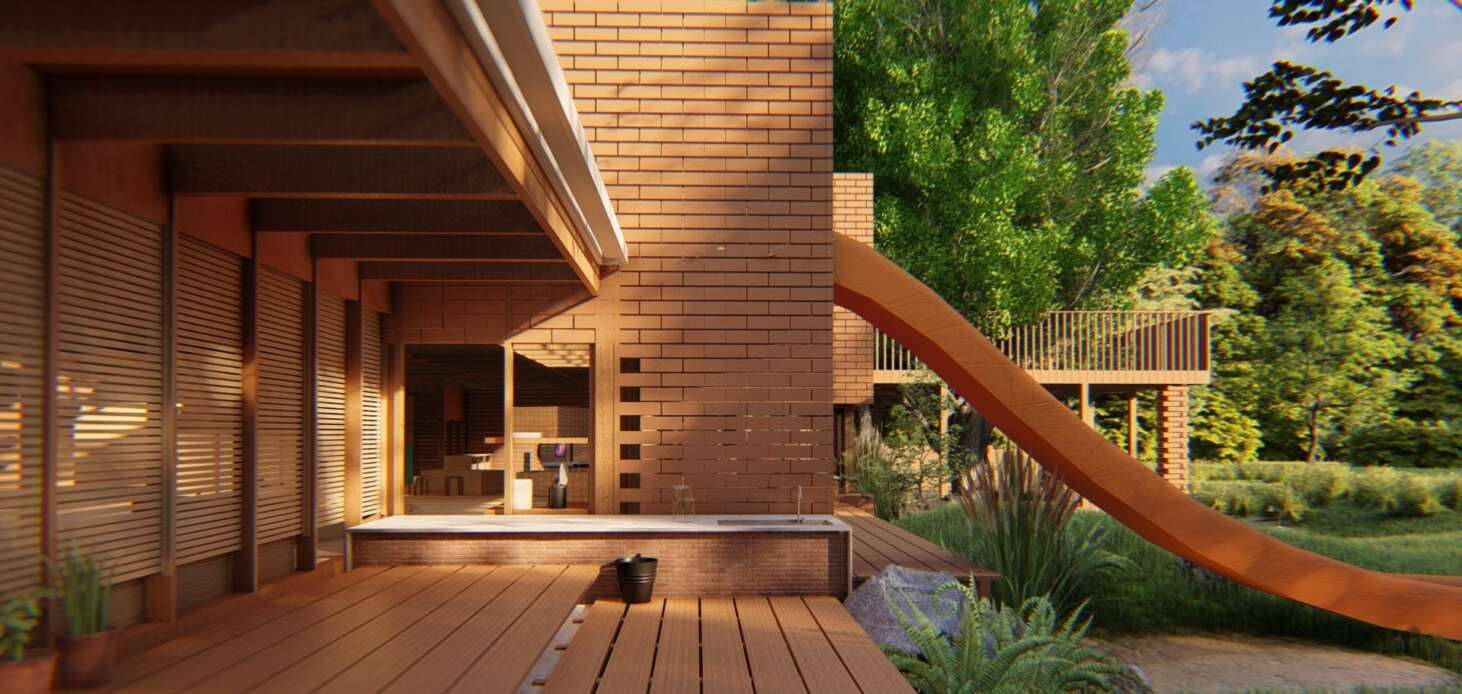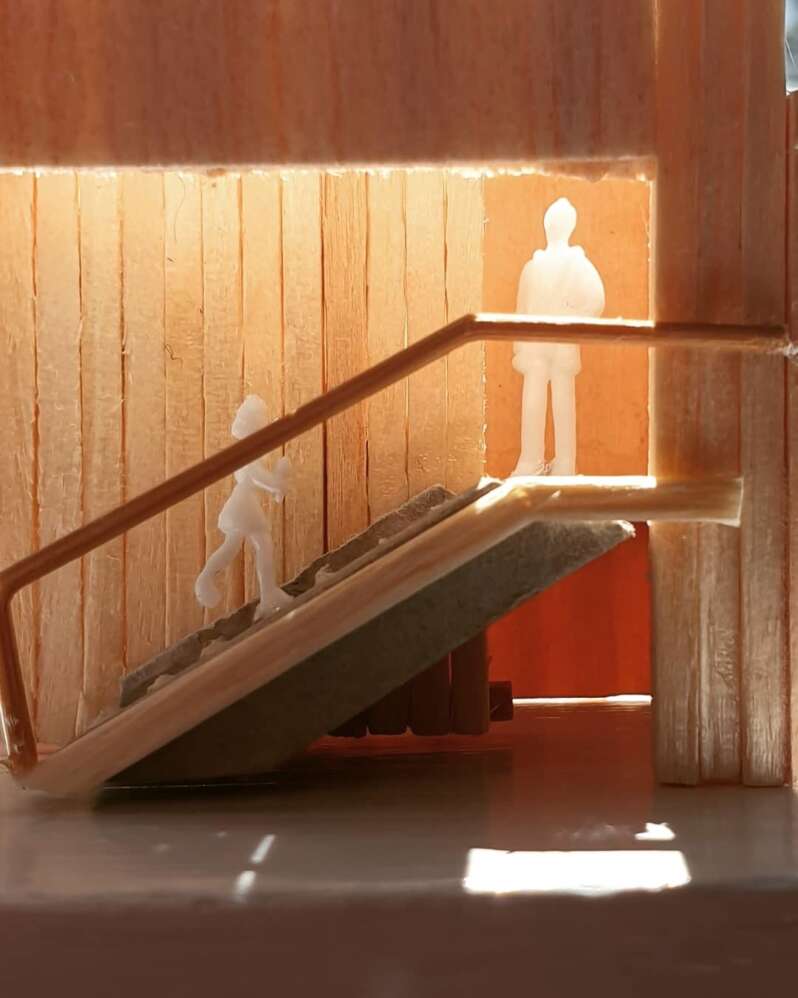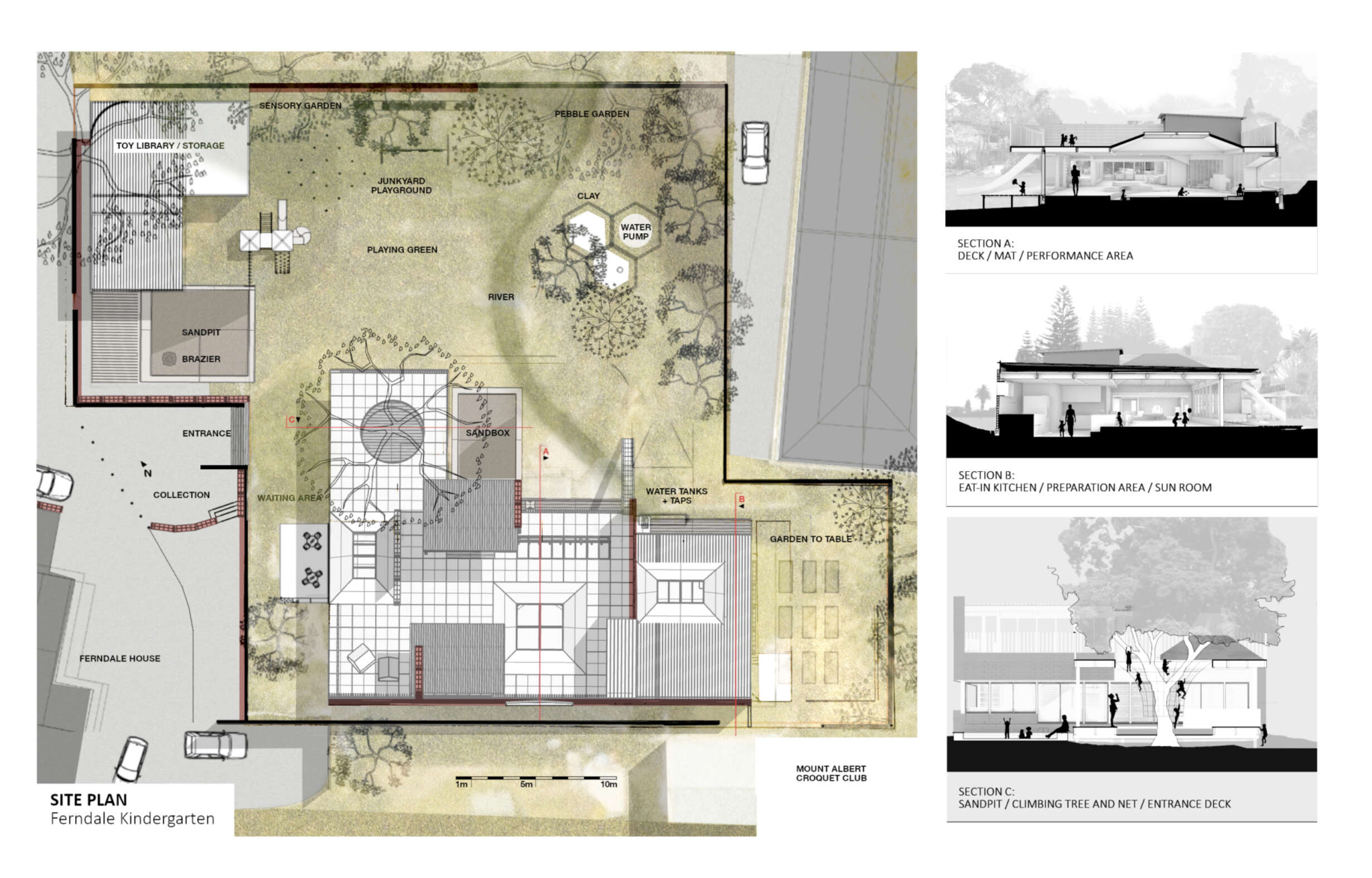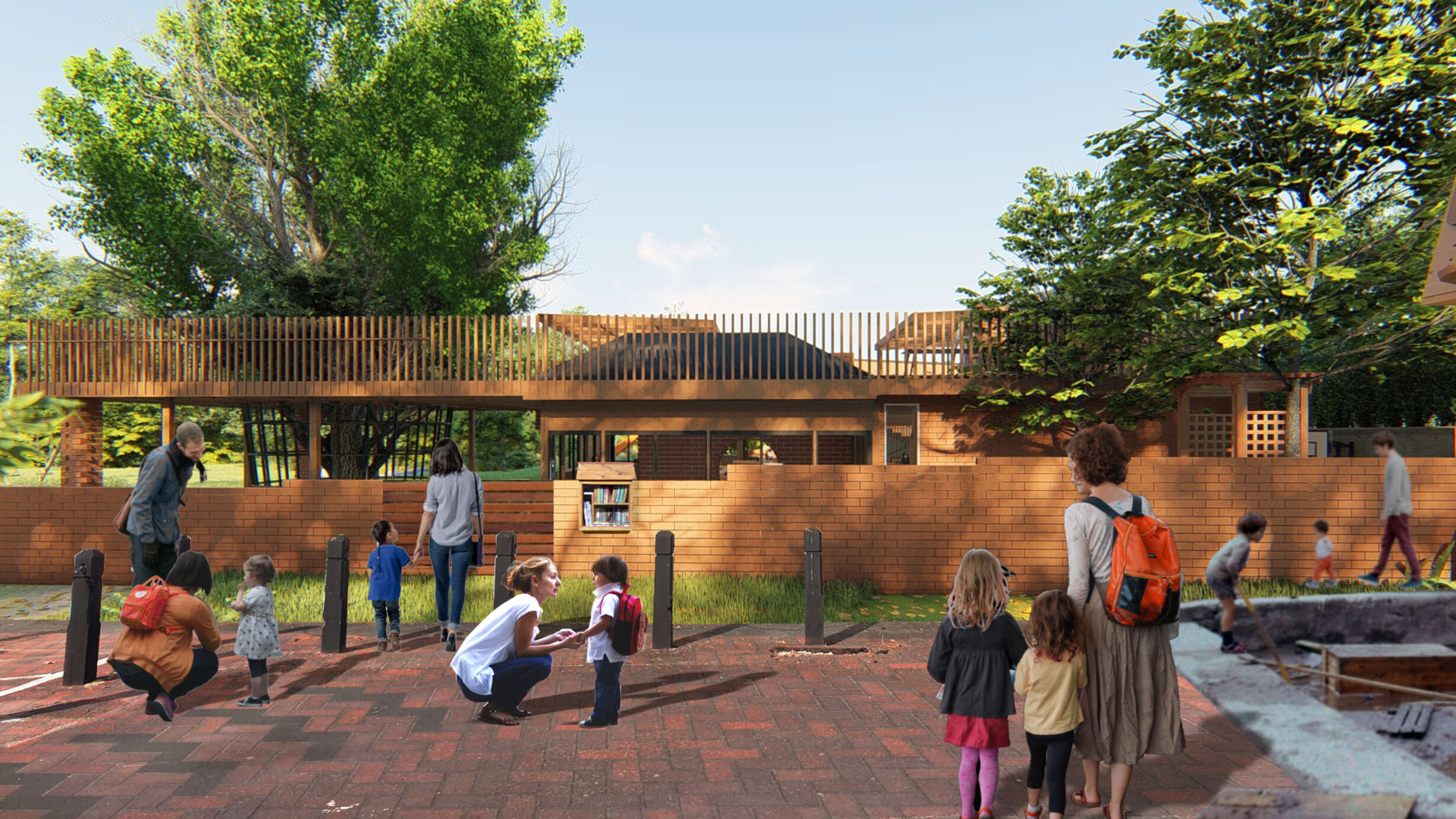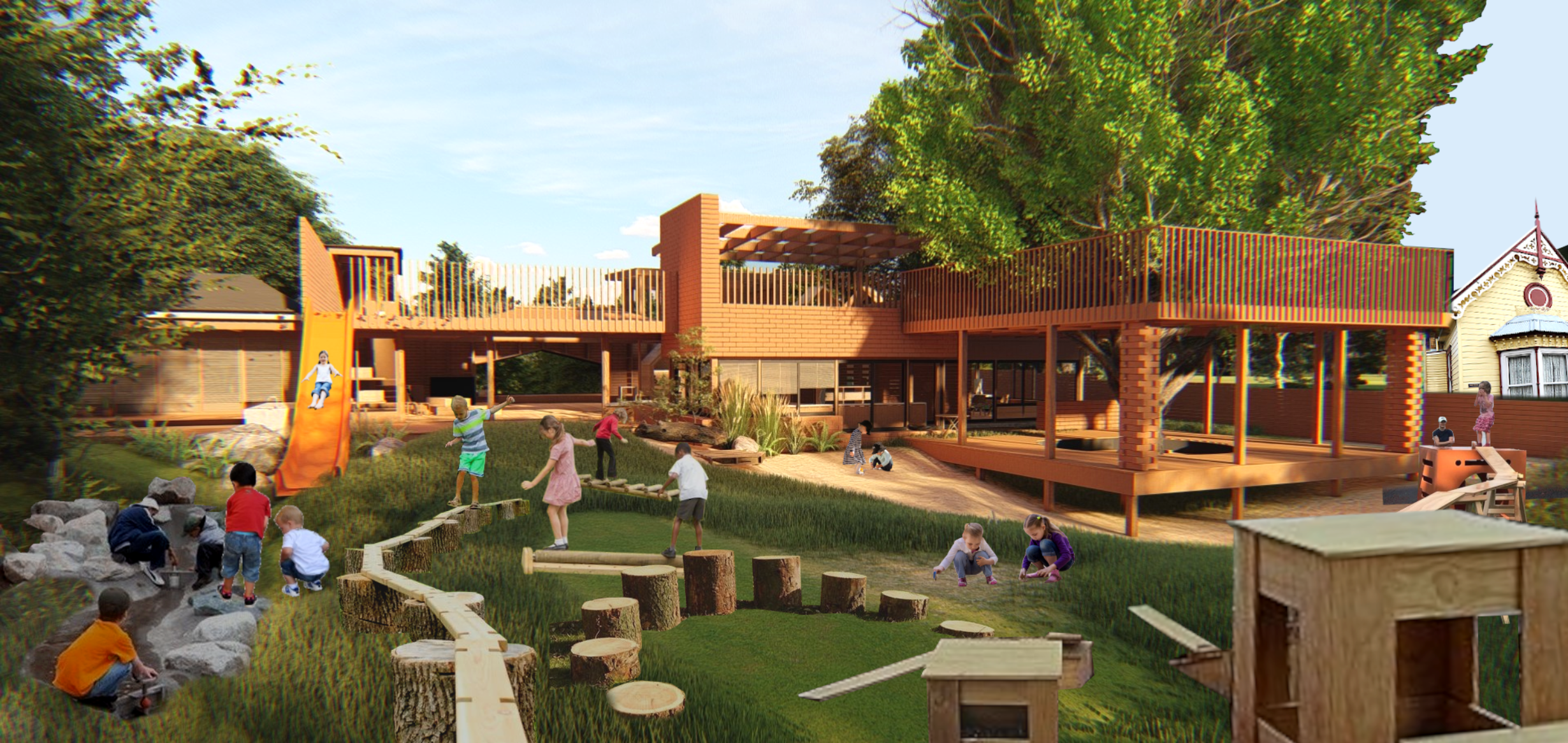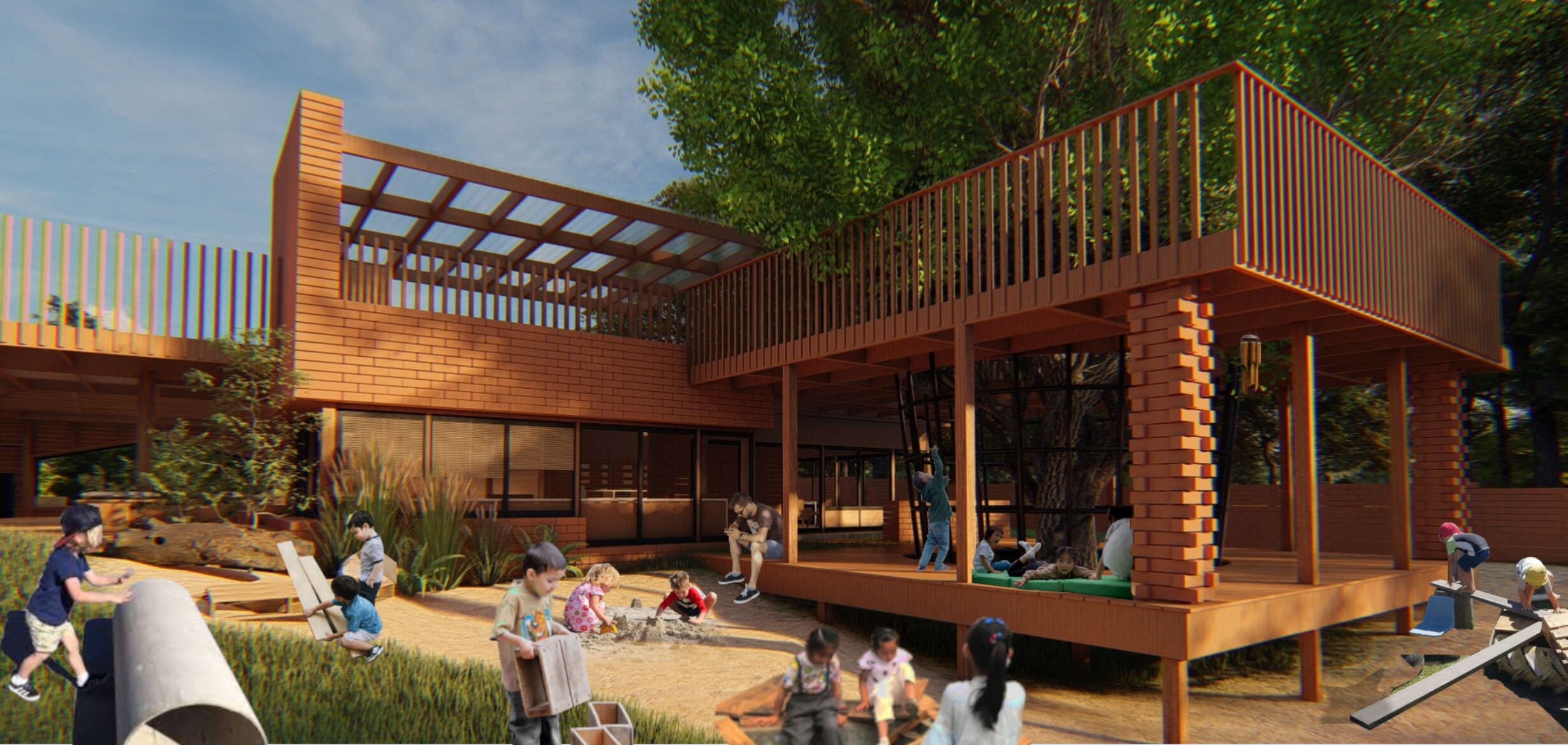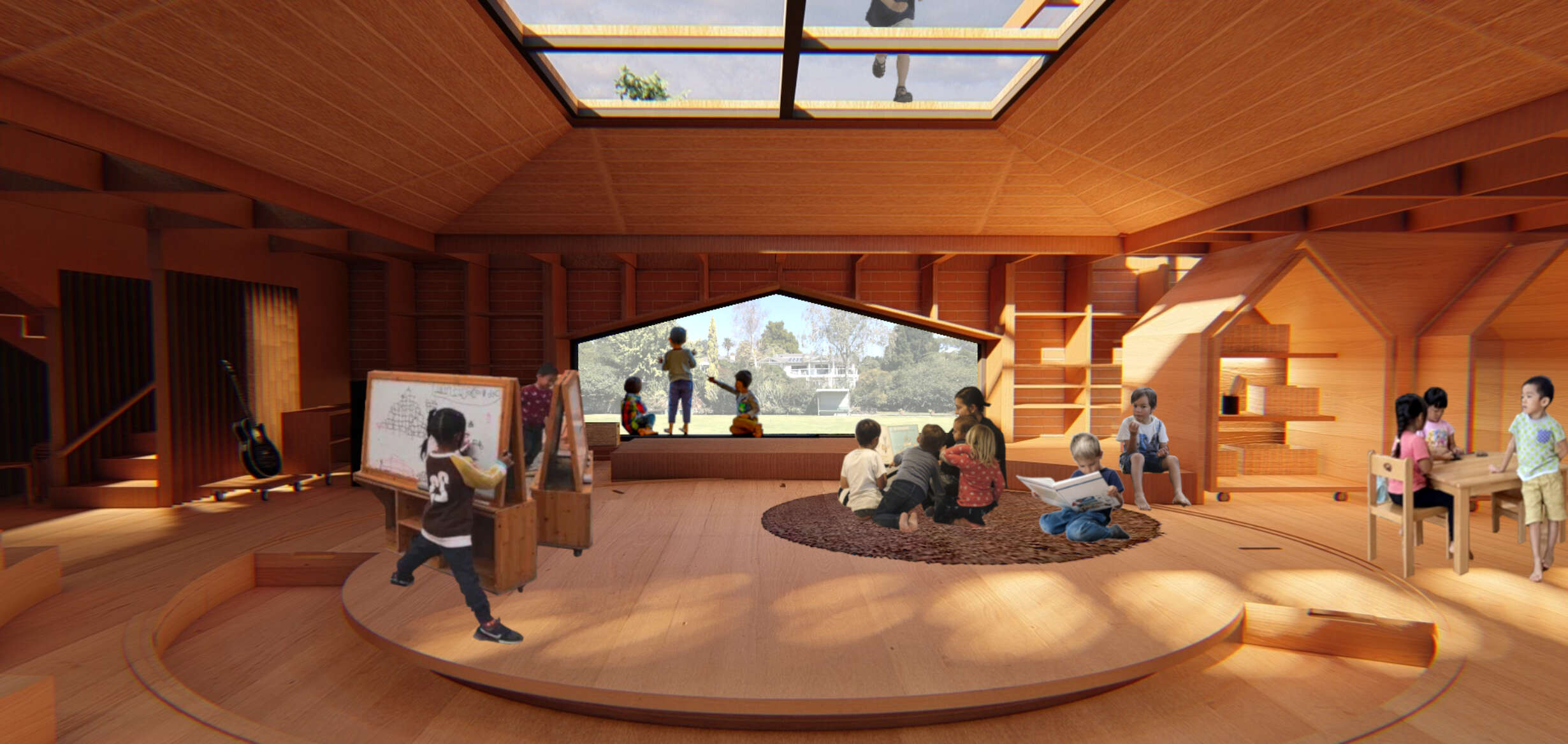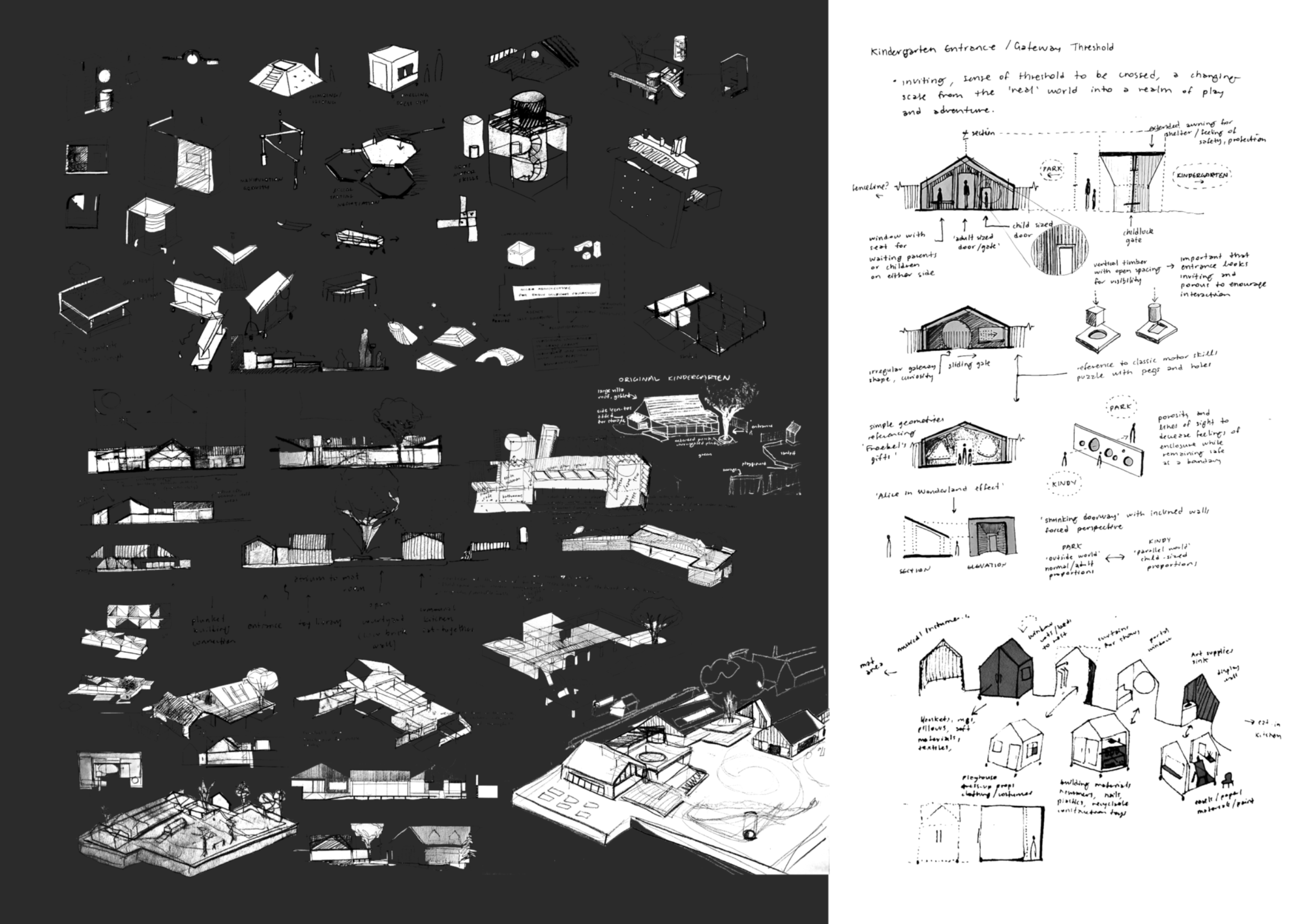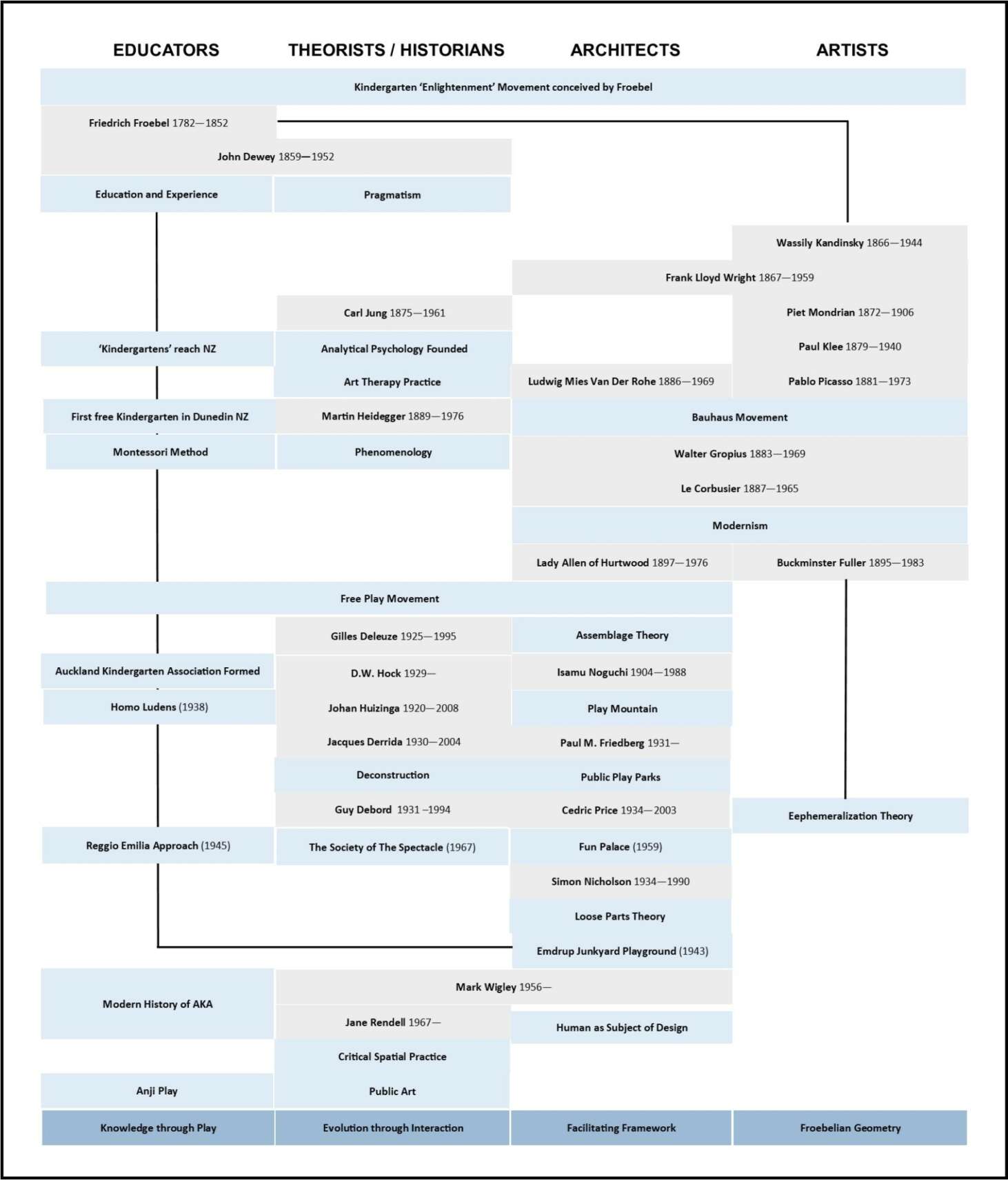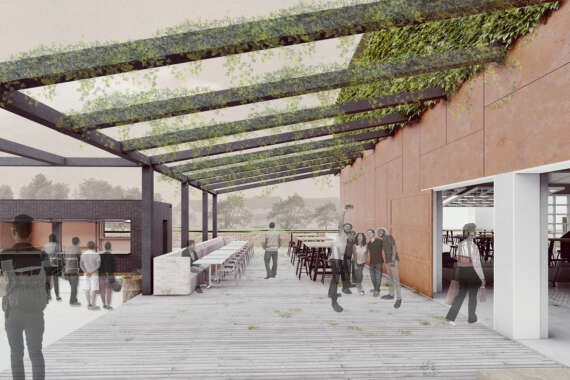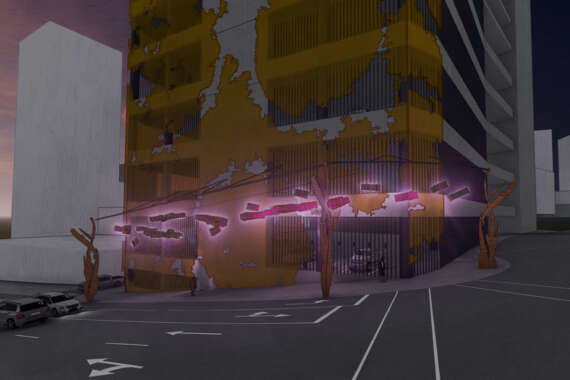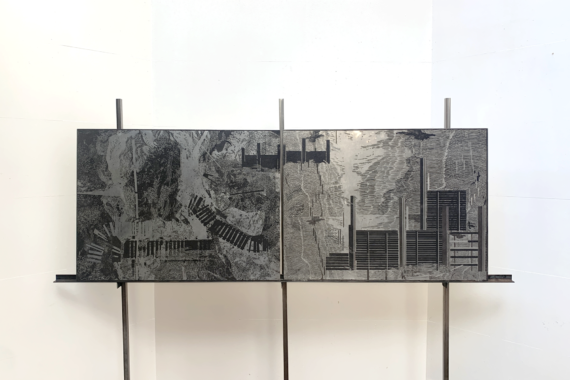Lessons from Kindergarten: Reassembling Froebel's Architectural Legacy
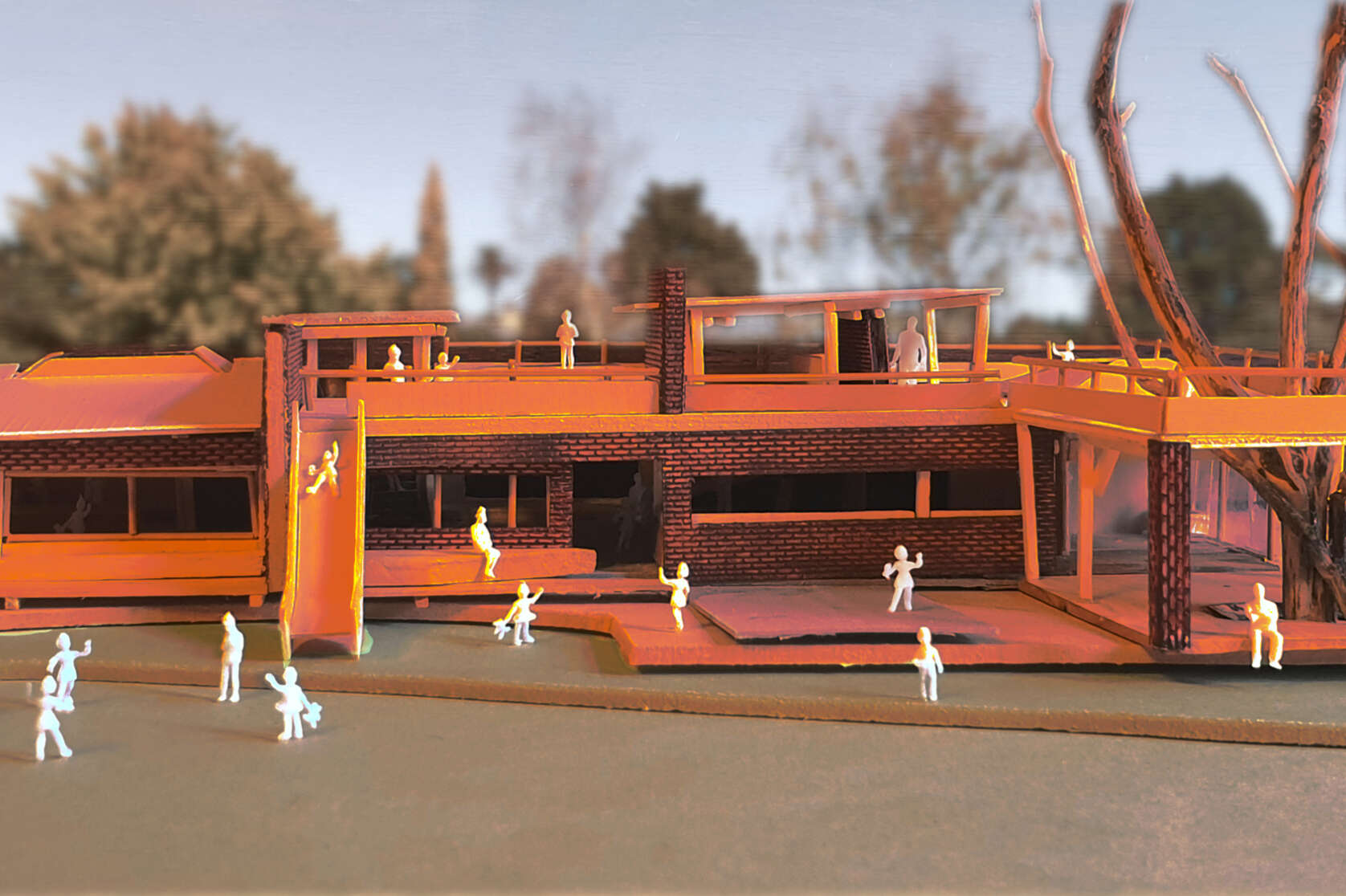
Kindergarten is both a time and a space where children develop key facets of self outside of the familial domestic sphere. It is a threshold where a delicate balance of guidance through intervention, interaction and individuation through the medium of play is vital to establishing a fulfilling sense of purpose and development within each child. A child learns from both social interactions with their teachers, guardians and each other, and the shared and individual interactions with their environment.
How can architects prepare children for the future?
Drawing from these considerations, this thesis situates itself as an architectural-educational driven framework for early childhood education design, illustrating the findings through the reimagining of Ferndale Kindergarten.







